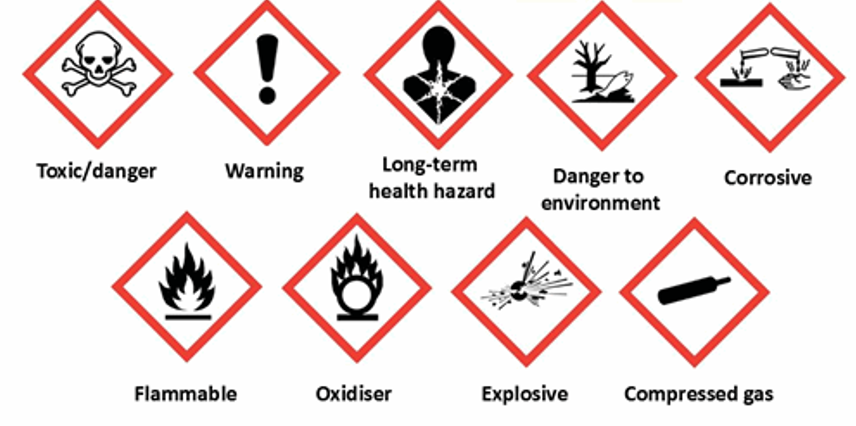COSHH (Control of Substances Hazardous to Health)
The COSHH Regulations 2002 are designed to safeguard everyone who may come into contact with dangerous substances. In a pharmacy there are some medicinal hazardous substances, such as cytotoxic drugs which can be used to treat cancer. The chemicals in these drugs are toxic and prevent the replication of cells and exposure can present significant risk if not handled correctly requiring the safety procedures to be followed.
Teratogenic drugs can cause harm to an unborn child so should not be touched by pregnant ladies or those trying to conceive. Some drugs are irritant and could cause a reaction when touched or inhaled. Clinical or contaminated waste from services can pose a health and safety hazard. Used sharps such as needles from a needle exchange scheme can also be a health and safety risk and appropriate procedures should be followed.
Remember it is not only contact with liquids and solids that can damage your health; biological contamination e.g. blood and vapours e.g. from aerosols are all potential hazards.
There are also other substances that are not medicinal to be aware of such as:
- Domestic cleaning products
- Ink from printer cartridges
- Nail varnish remover or other solvents.
Although these should not cause harm in the amounts used in a pharmacy branch environment, the advice in the next section should be followed.
When using hazardous substances:
ALWAYS...
- Follow SOPs and instructions when handling, using, or storing hazardous substances. Ask your pharmacist if you are in doubt or unsure
- Read all hazard warning signs and instruction labels on containers prior to use
- Ensure you know what to do if a substance spills into your eyes, onto your skin or clothes and what to do in an emergency
- Take care when opening containers, some materials are quite volatile, and it is possible that a slight pressure may build-up in the container
- Use the correct personal protective equipment (PPE) – if a risk assessment or SOP states that you must wear an item of PPE it is your responsibility to ensure that you do
- Store hazardous substances in a suitable manner within a controlled environment, paying attention to keep those marked flammable or oxidising away from heat such as paraffin-based skin products
- Report any eye irritation, skin rashes, sore throats or breathing difficulties to your line manager if you have been handling any hazardous substances
- Ensure Safety Data sheets for all medicines are readily available (online or paper based) and the sheets for medicines of high risk (e.g., Flammable, Teratogenic, Corrosive and Cyctotoxics) copies are kept in a COSHH risk register in the pharmacy
- If possible, segregate the COSHH medicines from normal medicines. It is best practice to have a COSHH area / Hazardous cupboard in your pharmacy away from other medicines.
NEVER...
- Decant substances into unmarked or wrongly labelled containers
- Continue to use clothing that is soaked or badly stained by a hazardous substance
- Smoke near any substances especially those which are flammable or oxidising
- Sniff substances to find out what they are as it is an extremely dangerous practice that can cause serious damage to your health
- Eat or drink in or near to areas where substances are being used and always wash your hands before eating or drinking and after you have been handling substances
- Dilute or mix chemicals unless you are fully aware of and protected against, any chemical reactions that may occur. Always read and follow the SOP
The following symbols have been designed to give you instant recognition of potentially harmful or dangerous substances.

